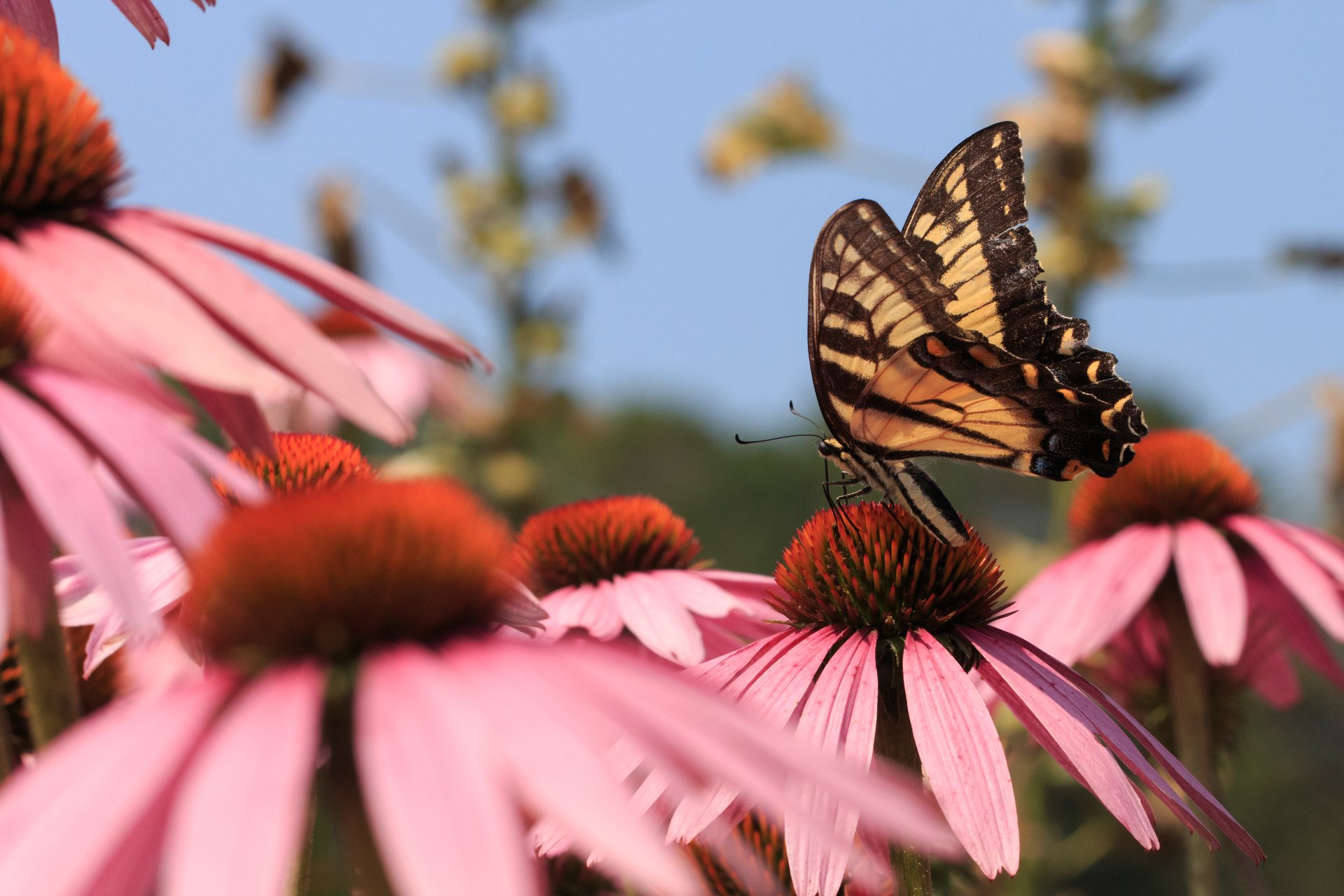Insects & Arachnids
Butterfly Atlas
From 1986 to 1990, hundreds of volunteer butterfly enthusiasts spent thousands of hours in the field in an effort to record the distribution of Massachusetts butterflies—the first systematic statewide butterfly atlas to be undertaken in North America. In this atlas publication, we have chosen simply to present the 1990 snapshot.
How Data Was Collected
The data was collected within a grid based on the USGS topographic quadrangles.
Each quad was divided into six equal blocks, and participants attempted to verify the presence of as many species of butterfly as possible within each block, noting a variety of other data with each record. The result was the most detailed summary of the spatial and seasonal distribution of Massachusetts butterflies ever compiled.
Project Scope
The effort exerted during the five active field seasons of the Massachusetts Butterfly Atlas Project can be seen in the following statistics.
- Number of contributors: 154
- Number of quads covered: 186 (100% of quads)]
- Number of blocks covered: 723 (65% of blocks)
- Number of confirmed species: 102
- Number of unduplicated records: 7,369 records in database; 7,223 unduplicated records (a species was recorded more than once per block 146 times.)
Following the five-year data collection period, the project's coordinators (Brian Cassie, Chris Leahy, and Dick Walton, along with a number of volunteers) completed and edited species accounts. They not only summarized the atlas data, but also included status and abundance information, life histories, and other material pertaining to all species of butterflies then known to occur in Massachusetts-including those not found during the duration of the atlas fieldwork.
At the same time, the Massachusetts Office of Geographic and Environmental Information (aka MassGIS) undertook the task of converting the computerized atlas data into accurate and legible maps.
Snapshot in Time
Users should bear in mind that the atlas maps represent a "snapshot" in time of Massachusetts butterfly distribution. This is the primary function of a biological atlas for conservation purposes—to set a baseline against which successive future surveys can be compared.
The Status section in the species accounts also reflects what we knew about the Commonwealth's butterfly fauna beginning two decades ago. Since then, the Massachusetts Butterfly Club—which was founded as a result of the information and enthusiasm generated by the atlas project—has added enormously to our knowledge of the state's butterflies.
From 1990 to 1998, the club accumulated 19,000 records. These additional data have filled many holes in the atlas maps—some of which reflect a lack of coverage more than an absence of butterflies—and have refined our perceptions of distribution and abundance. Furthermore, it is increasingly clear that butterflies, like other organisms, are not biologically static but change in status as a result of adapting to new food plants, climate change, and other factors.
Explore the Data
Special Thanks
We especially appreciate the contributions of the members of the Massachusetts Butterfly Club, many of whom generously contributed their photographs, in making this website a reality. We particularly welcome photographs for species not currently depicted or updates to species accounts.
The Massachusetts Butterfly Atlas could not have been accomplished without the generous contributions of thousands of hours in the field by many butterfly enthusiasts.
Recommended Citations for the Massachusetts Butterfly Atlas
When citing the atlas as a whole:
Leahy, C.W., B. Cassie, and R. K. Walton (eds). 2006. Massachusetts Butterfly Atlas 1986-1990, Mass Audubon
Example for citing individual species accounts:
Cassie, B. 2006.Pipvine Swallowtail, Battus philenor Linneaus 1771. In: Leahy, C.W., B. Cassie, and R. K. Walton (eds), Massachusetts Butterfly Atlas 1986-1990, Mass Audubon



